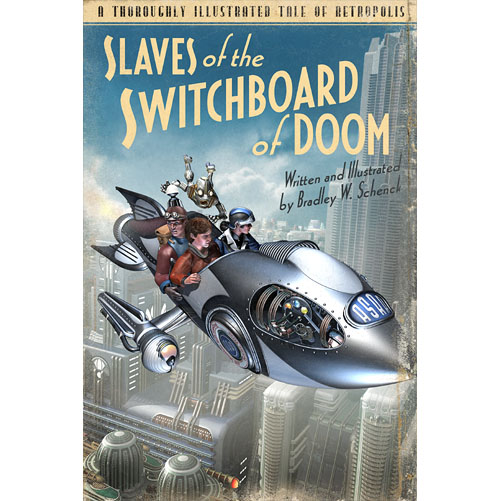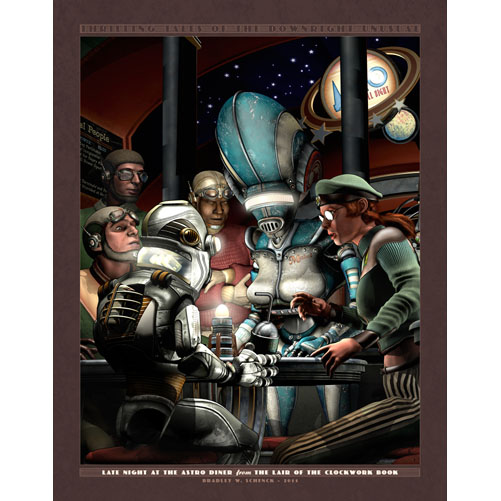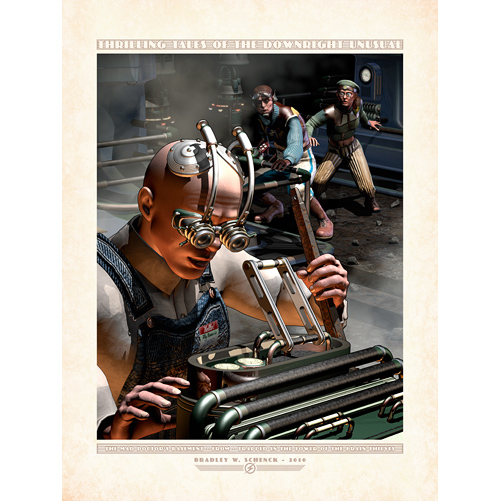

By redefining my terms I’ve now found myself in the middle of the third draft for Slaves of the Switchboard of Doom. They’re my terms. I’m gonna do what I like with them, and you’re gonna take it… and like it.
I’d planned the second draft like this: two passes through the printed manuscript, resulting in so many penciled corrections that you could barely see the words any more; a line by line edit based on those changes… plus whatever else occured to me at the time; three new short scenes, a bonus expanded scene, and rewrites for two long sequences. Then… a last complete line by line edit.
But by the time I was ready for that final item it seemed like what I had – after all those edits, added scenes, and rewrites – was a second draft; taking another complete pass through the book felt more like a third. So there it is. I redefined what the second draft was and found that I was already working on the third draft. I think this is what they do in Congress.
After this I’ll have to admit that the book in this form is about as good as it’s likely to get. I probably won’t make any further changes until I see some good reasons for them; like, for example, something big is wrong. It’s been hard for me to keep the big picture in my sights due to all the small scale changes I’ve been working on: trees, forest. If there’s a substantial problem with pacing, or if some crucial bit of information is either too subtle or too obvious, or if I completely forgot to plug a plot hole because I can’t see it any more, then that would be a good reason for a fourth draft. (Though I’m still being surprised by the occasional typo that is not a misspelled word; I sure thought I’d caught them all by now.)
Since I continue to distract myself with shiny things you can see a second cover concept at the top of this post; also, I updated the query synopsis and then wrote this alternate one:

The switchboard operators of Retropolis find themselves replaced – due to an efficiency review – by a mysterious system they don’t understand. So Nola Gardner pools their severance pay to hire Dash Kent, freelance adventurer and apartment manager, to find out what’s happened to their jobs.
That ought to be a simple job for Dash, even if his practical experience is limited to heroic rescues (of what he calls entities) from the Priests of the Spider God, in their temple at Marius Crater. But things go sideways once they unmask an insane civil engineer and his horde of black market robots; when a grisly discovery is made, late one night, in a darkened alley; when thousands of cheerfully maniacal scientists burst out of their seclusion in the Experimental Research District; and when, above all, people start shooting. Allied with an unlikely assortment of human and mechanical people, Dash and Nola find themselves in a race to discover the hidden switchboard at the center of a plot that threatens every human person in Retropolis.
Retropolis has found ways to contain its abundance of Mad Science. But in Slaves of the Switchboard of Doom we learn that if a civil engineer should go mad… he knows how to build madness on a scale that’s never been seen before.
Slaves of the Switchboard of Doom (103,000 words, complete) is a light-hearted adventure set in one of our used futures: because nobody else was using it at the moment, and because the author wanted to do for the retro future something like* what Terry Pratchett has done for heroic fantasy.
* No footnotes.

The Pratchett reference might go: that’s a thing that could easily do more harm than good in a query. But I’m so fond of a footnote that reads “No footnotes” that I just can’t change it yet.
One curious thing is that even though the book’s word count has gone up and down, it always ends up in the same place. The line edits most often shortened it, but the new and expanded scenes enlarged it; and finally the much more streamlined opening cut it back down again. But over and over again it’s settled back to just about 103,000 words. Contents may settle during shipping. It just seems like that’s where it wants to be.








